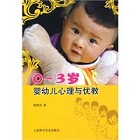小学英语语法小知识
一、人称代词和物主代词
1. 英语有下面这些人称代词:
|
|
单数 |
|
|
复数 |
|
|
|
|
一 |
二 |
三 |
一 |
二 |
三 |
|
主格 |
I |
you |
he she it |
we |
you |
they |
|
宾格 |
me |
you |
him her it |
us |
you |
them |
2. 物主代词有下面这些:
|
|
我的 |
你的 |
他(她,它)的 |
我们的 |
你们的 |
他们的 |
|
形容词型 的物主代词 |
my |
your |
his, her, its |
our |
your |
their |
|
名词型的 物主代词 |
mine |
yours |
his, hers, its |
ours |
yours |
theirs |
www.ertong6.com
二、名词复数
1. 名词复数的规则变化
1) 一般情况加 –s:map-maps boy-boys girl-girls pen-pens bag-bags car-cars
清辅音后读/s/ 浊辅音和元音后读 /z/
2) 以s, sh, ch, x结尾加 –es, 读 /iz/
bus-buses watch-watches box-boxes brush-brushes
3) 以辅音字母+y结尾,变y 为i再加es, 读 /z/
baby---babies city-cities country-countries
但以y结尾的专有名词,或元音字母+y 结尾的名词变复数时,直接加s变复数。例如:
two Marys the Henrys monkey---monkeys holiday---holidays
4) 以o结尾的名词,变复数时:
a.以两个元音字母结尾(其一必定是o)时,加es
zoo-zoos kangaroo-kangaroos
b.某些外来词
photo-photos piano-pianos
c.其余情况,都发o
5) 以f或fe 结尾的名词变复数时:
a. 加s,如: belief---beliefs roof---roofs
safe---safes gulf---gulfs;
b. 去f,fe 加ves,如:half---halves
knife---knives leaf---leaves wolf---wolves
wife---wives life---lives thief---thieves;
c. 上述a和b两种方法均可,如handkerchief: handkerchiefs / handkerchieves。
2. 名词复数的不规则变化
1) child---children foot---feet tooth---teeth
mouse---mice man---men woman---women
注意:由一个词加 man 或 woman构成的合成词,其复数形式也是 -men 和-women,如an Englishman,two Englishmen。但German不是合成词,故复数形式为Germans;Bowman是姓,其复数是the Bowmans。
2) 单复同形,如deer,sheep,fish,Chinese,Japanese ,li,jin,yuan,two li,three mu,four jin等。但除人民币的元、角、分外,美元、英镑、法郎等都有复数形式。如:a dollar, two dollars; a meter, two meters。
3)集体名词,以单数形式出现,但实为复数。例如:
people police cattle 等本身就是复数,不能说 a people,a police,a cattle,但可以说a person,a policeman,a head of cattle.
4) 以s结尾,仍为单数的名词,如:
a. maths,politics,physics等学科名词,一般是不可数名词,为单数。
b. news 为不可数名词。
c. the United States,the United Nations 应视为单数。
The United Nations was organized in 1945. 联合国是1945年组建起来的。
d. 以复数形式出现的书名,剧名,报纸,杂志名,也可视为单数。例如:
"The Arabian Nights" is a very interesting story-book. 《一千零一夜》是一本非常有趣的故事书。
5) 表示由两部分构成的东西,如:glasses (眼镜) trousers, clothes等,若表达具体数目,要借助数量词 pair(对,双); suit(套); a pair of glasses; two pairs of trousers等。
6) 另外还有一些名词,其复数形式有时可表示特别意思,如:goods货物,waters水域,fishes(各种)鱼。
www.ertong6.com
3. 不可数名词
常用不可数名词
bread面包 beer啤酒cloth布 coffee咖啡cream奶油 dust尘土gin杜松子酒 glass玻璃gold黄金 ice冰jam果酱 oil油paper纸 sand沙soap肥皂 stone石头tea茶 water水 juice饮料
wine葡萄酒 wood木头advice忠告/主意 beauty美丽,漂亮courage勇气 death死亡
experience经验 fear担心help帮助 hope希望horror恐惧 information消息/信息knowledge知识 mercy仁慈pity同情 relief救济steak牛排 mince肉馅suspicion猜疑 work工作baggage行李 camping露营damage损害 furniture家具luggage 行李 parking停车shopping购物 weather天气money金钱 people人物a bit of news一件消息a cake of soap一块肥皂a drop of oil一滴油a grain of sand一粒沙子a pane of glass一块玻璃a piece of advice一条忠告a pot of jam一罐果酱a sheet of paper一页纸a box of milk一盒牛奶
三、一般现在时之动词第三人称单数
在一般现在时中,如果主语是第三人称单数,动词则需用第三人称单数形式;动词的否定句和疑问句要借助于助动词does来构成。
1. 动词第三人称单数形式的变化规则:
(1)一般情况下,直接在动词词尾加-s。
例如: swim—swims get—gets
(2) 以字母s, x, o, ch或sh结尾的动词,词尾加-es。
例如: guess—guesses teach—teaches wash—washes
(3) 以“辅音字母+y”结尾的动词,先变y为i,再加-es。
例如: fly—flies study—studies
(4)在以"o"结尾的动词后面应加es。
例如:go—goes do—does
(5)have的的第三人称单数是:has。
2. 当主语是第三人称单数时的句型结构:
(1)肯定句:主语+动词第三人称单数形式+其他.
例如: She likes English.
(2) 否定句:主语+does not / doesn't+动词原形+其他.
例如: Henry doesn't have any brothers.
(3)一般疑问句:Does+主语+动词原形+其他? 肯定回答:Yes, 主语+does. 否定回答:No, 主语+doesn't.
例如: —Does he work in the hospital?
—Yes, he does. / No, he doesn't.
(4) 特殊疑问句:特殊疑问词+一般疑问句?
例如: When does Li Ming do his homework every day?
特别提示:当句中有助动词does出现时,动词要用原形。
www.ertong6.com
四、动词的现在分词的变化规则
1. 一般情况下,直接在动词后加-ing
work ---- working sleep ----- sleeping study ----- studying
2. 动词以不发音的-e结尾,要去-e加-ing
take ----- taking make ----- making dance ----- dancing
3. 重读闭音节的动词,要双写词尾字母,再加-ing
cut ----- cutting put ----- putting begin ------ beginning
4 以-ie结尾的动词,把变成y再加-ing
lie ----- lying tie ----- tying die ----- dying
五、动词过去式变化规则:
1.一般在动词末尾加-ed,如:pull-pulled, cook-cooked
2.结尾是e加d,如:taste-tasted
3.末尾只有一个元音字母和一个辅音字母的重读闭音节,应双写末尾的辅音字母,再加-ed,如:stop-stopped
4.以“辅音字母+y”结尾的,变y为i, 再加-ed,如:study-studied
5.不规则动词过去式:
am,is-was, are-were, do-did, see-saw, say-said, give-gave, get-got, go-went, come-came, have-had, eat-ate, take-took, run-ran, sing-sang, put-put, make-made, read-read, write-wrote, draw-drew, drink-drank, fly-flew, ride-rode, speak-spoke, sweep-swept, swim-swam, sit-sat ...
www.ertong6.com
六、一般疑问句
一般疑问句也可称为 “yes / no questions”,因这种问句通常用yes / no来回答,相当于汉语中的“……吗?”其语序是:系动词be / 助动词/ 情态动词+主语+其他成分?如:
Are you from Japan﹖ Yes I am. / No I'm not.
Is her sister doing her homework now﹖ Yes she is. / No she isn't.
Does he work in a bank﹖ Yes he does. / No he doesn't.
Do you live near your school﹖ Yes I do. / No I don't.
Can you speak French﹖ Yes I can. / No I can't.
May I go home now﹖ Yes you may. / No you mustn't.
注意:
1.将陈述句变为一般疑问句时,如句中有be 动词(am is are …)时,可直接将它们提至主语前。如主语为第一人称,应将其改为第二人称。如:
I'm in Class 2Grade 1. → Are you in Class 2Grade 1﹖
We're watching TV. → Are you watching TV﹖
2.陈述句中有情态动词(can may must …)时,也可直接将它们提至主语前,即可成为一般疑问句。如:
He can swim now. → Can he swim now﹖
The children may come with us. → May the children come with us﹖
3.陈述句中只有一个实义动词作谓语且其时态为一般现在时,变为一般疑问句时要在句首加do或does 主语后的实义动词用原形。如:
I like these animals. → Do you like these animals﹖
She wants to go to the movies. → Does she want to go to the movies﹖
七、特殊疑问句
以疑问词开头,对句中某一成分提问的句子叫特殊疑问句。常用的疑问词有:what who whose which when where how why等。可先分为3种:
疑问代词:what,who,Which,whose,whom
疑问副词:when,where,why,how
疑问形容词:what(which,whose)+名词
特殊疑问句有两种语序:
1.如疑问词作主语或主语的定语,即对主语或主语的定语提问,其语序是陈述句的语序:疑问词(+主语)+谓语动词+其他成分?如:
who is singing in the room﹖
whose bike is broken﹖
2.如疑问词作其他成分,即对其他成分提问,其语序是:疑问词+一般疑问句语序? 如:
what class are you in﹖
What does she look like﹖
Where are you from﹖
What time does he get up every morning﹖
How do you know﹖
注意:
1.回答特殊疑问句时,不能用yes / no,即问什么答什么,尤其是简略回答。如:
Who is from Canada﹖ Helen (is).
Where's the restaurant﹖ Near the station.
Why do you like koalas﹖ Because they are cute.
2.特殊疑问句一般读降调(↓)。
常用的特殊疑问词有:
Who谁——Whose谁的
Why为什么 When什么时候 Where在哪里 Which哪一个
What什么 ( What time什么时间 What colour什么颜色)
How怎么样(How many多少{数量} How much多少钱{价格} How long多长 How often多少次 How big多大 How heavy多重{重量}How far多远{路程} How tall多高 How old多大{年龄})
关键字:小学英语课堂,英语课堂用语,小学英语课堂游戏














